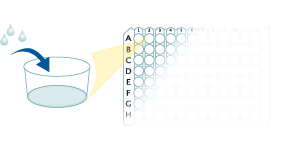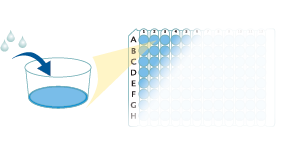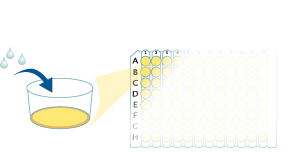 全部商品分类
全部商品分类



 下载产品说明书
下载产品说明书 下载SDS
下载SDS 用小程序,查商品更便捷
用小程序,查商品更便捷


 收藏
收藏
 对比
对比 咨询
咨询Product Summary
Recovery
The recovery of mouse PCSK9 spiked to three levels throughout the range of the assay in various matrices was evaluated.
| Sample Type | Average % Recovery | Range % |
|---|---|---|
| Cell Culture Supernates (n=6) | 102 | 94-115 |
| Cell Lysates (n=5) | 103 | 91-117 |
Linearity
Scientific Data
Assay Procedure
Refer to the product- Prepare all reagents, standard dilutions, and samples as directed in the product insert.
- Remove excess microplate strips from the plate frame, return them to the foil pouch containing the desiccant pack, and reseal.
- Add 50 µL of Assay Diluent to each well.
- Add 50 µL of Standard, Control, or sample to each well. Cover with a plate sealer, and incubate at room temperature for 2 hours.
- Aspirate each well and wash, repeating the process 4 times for a total of 5 washes.
- Add 100 µL of Conjugate to each well. Cover with a new plate sealer, and incubate at room temperature for 2 hours.
- Aspirate and wash 5 times.
- Add 100 µL Substrate Solution to each well. Incubate at room temperature for 30 minutes. PROTECT FROM LIGHT.
- Add 100 µL of Stop Solution to each well. Read at 450 nm within 30 minutes. Set wavelength correction to 540 nm or 570 nm.





Mouse Proprotein Convertase 9/PCSK9 Quantikine ELISA Kit Summary

Background: Proprotein Convertase 9/PCSK9
PCSK9 (proprotein convertase subtilisin kexin 9), also called proprotein convertase 9 or NARC-1 (neural apoptosis-regulated convertase 1), is a member of the proteinase K subfamily of subtilisinrelated serine endoproteases. Mouse PCSK9 cDNA encodes 694 amino acids, including a signal peptide, a prodomain, and a catalytic domain. PCSK9 is highly expressed in the liver, intestine, and kidney. It is initially synthesized as a soluble 74 kDa precursor protein. In the endoplasmic reticulum, it undergoes autocatalytic intramolecular cleavage to generate a 14 kDa prodomain and a 60 kDa catalytic domain. While within the secretion pathway, the prodomain remains associated and functions as a chaperone for the catalytic domain (1-4). During secretion, a portion of active PCSK9 may undergo additional N-terminal proteolysis by furin or proprotein convertase 5/6A, creating an inactive 53 kDa form (5). This cleavage site is conserved between mouse and human or rat PCSK9, which share 78% or 93% amino acid sequence identity, respectively. While the 60 kDa protein is the major form, its ratio with the 53 kDa forms is variable in humans (5, 6).







